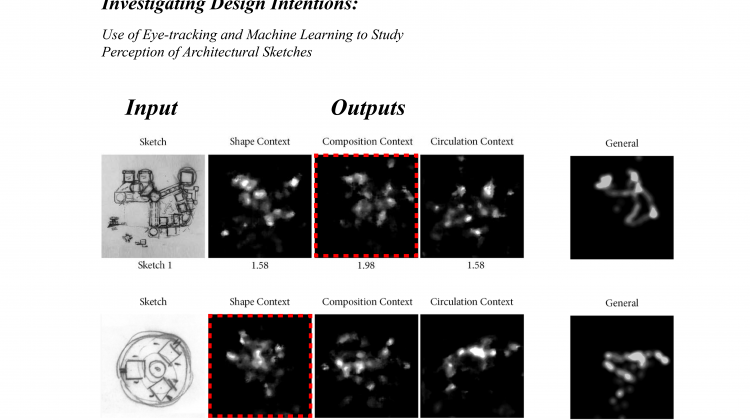Xiaoyun Zhang
Xiaoyun Zhang is a PhD candidate in Computation at the Department of Architecture. She is from Beijing, China. She holds a BArch and a MADU from the University of Notre Dame, and a SMArchS Computation from MIT. Her current research focus is ROSAS, or Reciprocal Observational Stochastic Action-Space model, which translates temporal-spatio eye-movement patterns into architects' perception of design intentions. This model-based approach leads to a Neural Network where machines learn to see like architects in understanding design representations. She is an MIT Presidential Fellow of year 2022 - 2023.
She is interested in studying compositional system and procedure of architects' vision in Design Intelligence and incorporating visual thinking into computational design processes. Carrying on the hand-drawn tradition in architectural design of the Renaissance and École des Beaux-Arts, she is now exploring architects eye movement in the context of perception and creativity. Meanwhile, she has conducted researches in Traditional East Asian Architecture and its design philosophies compared to the Greco-Roman tradition. She has been designing to integrate architectural composition and construction traditions with contemporary social and environmental needs in living.
Her master thesis work, "Envisage: Investigating Design Intentions, Visual Perception through Eye Tracking of Architectural Sketches" proposed a method to utilize eye-tracking as a translator between the graphics and the architects' perception of three types of design intention. Her PhD work advances to establishing novel deep learning framework and embedded AI to help architects visualize and solidify their design intentions. She has recently presented her work at SIGraDi 2024 in Barcelona, Spain, and at eCAADe 2025 in Ankara, Türkiye.
Xiaoyun has been working with DHARMA team at the School of Architecture, University of Notre Dame, where digital documentation, preservation and visualization of World Heritage Site has been the primary focuses. The team has worked on the Roman Forum, the Cortile del Belvedere in Vatican, the Taj Mahal, and many gardens along the Yamuna River in Agra, India. Xiaoyun’s hand-drawn plates on the reconstruction of building stages of the Cortile del Belvedere were exhibited in Bibliotheca Herziana as a part of DHARMA’s exhibition for Reviving the Lost Art of Drawing in the Digital Age conference in Rome. She taught at Notre Dame in Spring 2022 as a visiting scholar. Her professional design work includes a new classroom building at St.Ignatius College Prep in Chicago. She works with Prof. Nagakura on interactive visualization projects of world heritage site, such as a VR application for the original design of Hōryū-ji in Nara, Japan, and Medieval Japanese Sculpture collection at MFA.


I propose a method to utilize eye-tracking as a translator between the graphics and the architects’ perception of three types of intention: shape, composition, and circulation. My hypothesis is that we can perceive how architects represent these intentions -- through the means of graphics, which allows a more ambiguous and dynamic translation between intention and sketches, we can probe the underlying process by observing a viewer’s eye movements. Furthermore, heat maps, obtained from eye movements, can be adapted to a machine learning algorithm -- Image-conditioned Generative Adversarial Networks (GANs). I use this algorithm to translate the raw sense of space and visual gesture to capture human-level information acquisition of these intentions.
The forms and spaces take the very hearts of daily life and celebrate its warmth and tranquility. This graduate thesis focuses on integrating those life moments with traditional forms and spaces, and senses of belonging to a culture of humility, diversity and embracement of the histories through tectonic details, composition of spaces hierarchy and narratives.




